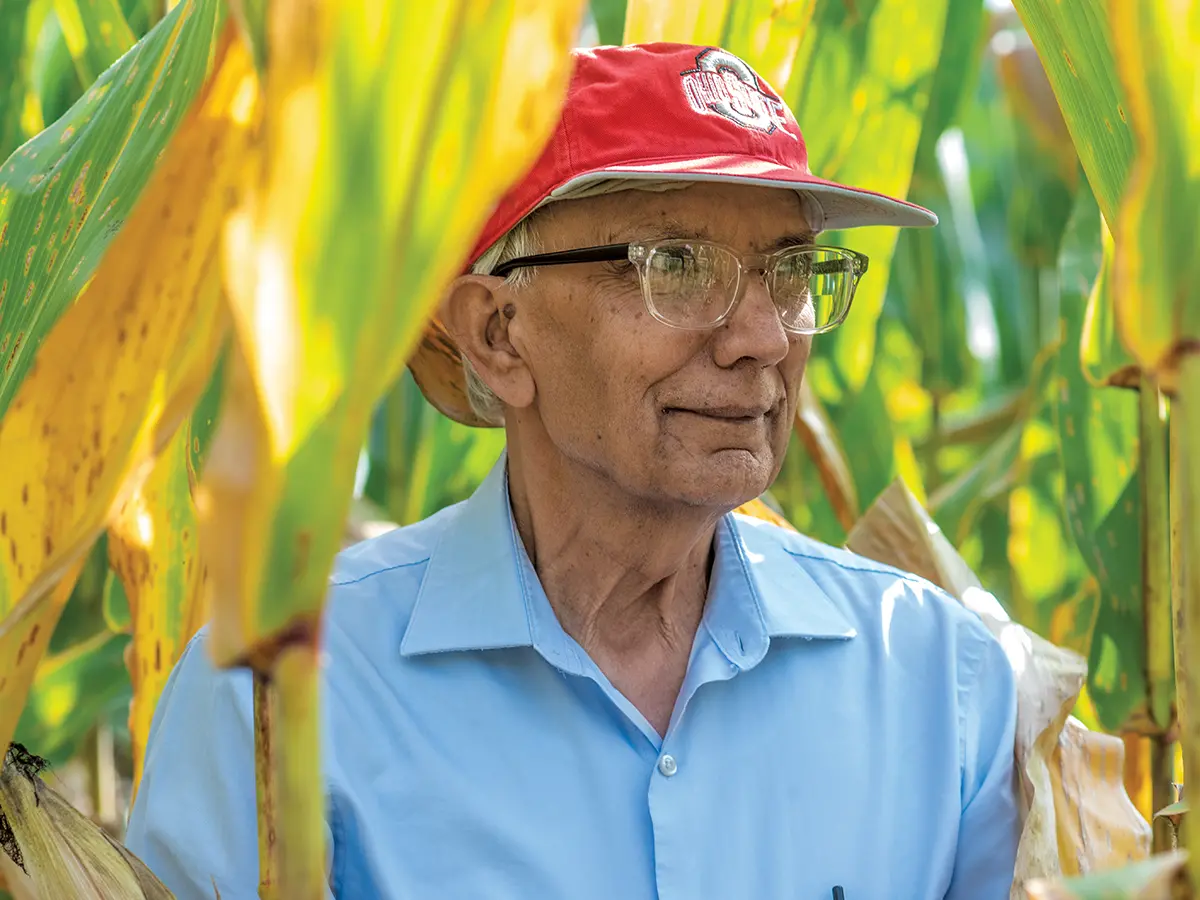This project will track bees using their DNA
Funded by the Defense Department, this collaboration between a professor and an alumnus is intended to protect crucial pollinators.

A bumblebee gathers pollen from a willow tree. (Photo courtesy of Karen Goodell)
In lab and field alike, Ohio State Newark’s Karen Goodell has dedicated her career to studying bumblebees and other pollinators. Now, she is teaming up with a former student on an innovative project that could help protect these insects’ dwindling populations.
With nearly $1 million in funding from the Department of Defense, Goodell and Rodney Richardson ’18 PhD will pioneer a method using environmental DNA (eDNA) to monitor for rare and endangered pollinators. If successful, their project will help address a shortage of experts that has made such work harder in recent years.
“Where this project comes in is trying to figure out how we are going to do this safely and effectively into the future,” says Goodell, a professor of evolution, ecology and organismal biology.
The scientists’ partnership began during Richardson’s doctoral studies in entomology. He is now an assistant professor of molecular ecology at the University of Maryland Center for Environmental Science’s Appalachian Laboratory.
What’s happening to bumblebees?
Bumblebees play a vital role. They are large and can fly in cooler temperatures than other pollinators, using their flight muscles to dislodge pollen more effectively. But the Center for Biological Diversity reports once-common species, such as the American bumblebee, have declined by nearly 90% in the past 20 years. As pesticides and climate change decimate bee populations, the urgency to better monitor them grows. “How can you protect something if you don’t know where it is?” Richardson says.
What’s lacking in current methods?
Researchers usually catch bumblebees in nets or using instruments such as insect vacuums. But these methods come with the risk that endangered insects could be injured or killed in the process. “Hand monitoring” can be difficult and, depending on where the bumblebees are, uncomfortable for the scientists as well. “What if they’re up in the trees, or what if they’re in a big thicket of thorns or foraging in really inaccessible locations?” Goodell says.
What is the new process?
The researchers will collect eDNA from flowers and other elements of the environment and use DNA sequencing to find evidence of the pollinator species. Entities such as the Department of Defense, which is required to keep tabs on endangered species on its lands, can use this method without the need for a taxonomic expert specifically trained to identify various species.
Where will the work take place?
The team will begin work this summer in George Washington and Jefferson National Forests of Virginia and West Virginia, and continue on to other sites in West Virginia and Pennsylvania. They hope the project, expected to take three years, yields not only published research but ultimately the adoption of their eDNA method as a new standard that would democratize monitoring of endangered pollinators and play a role in safeguarding these vital insects.



